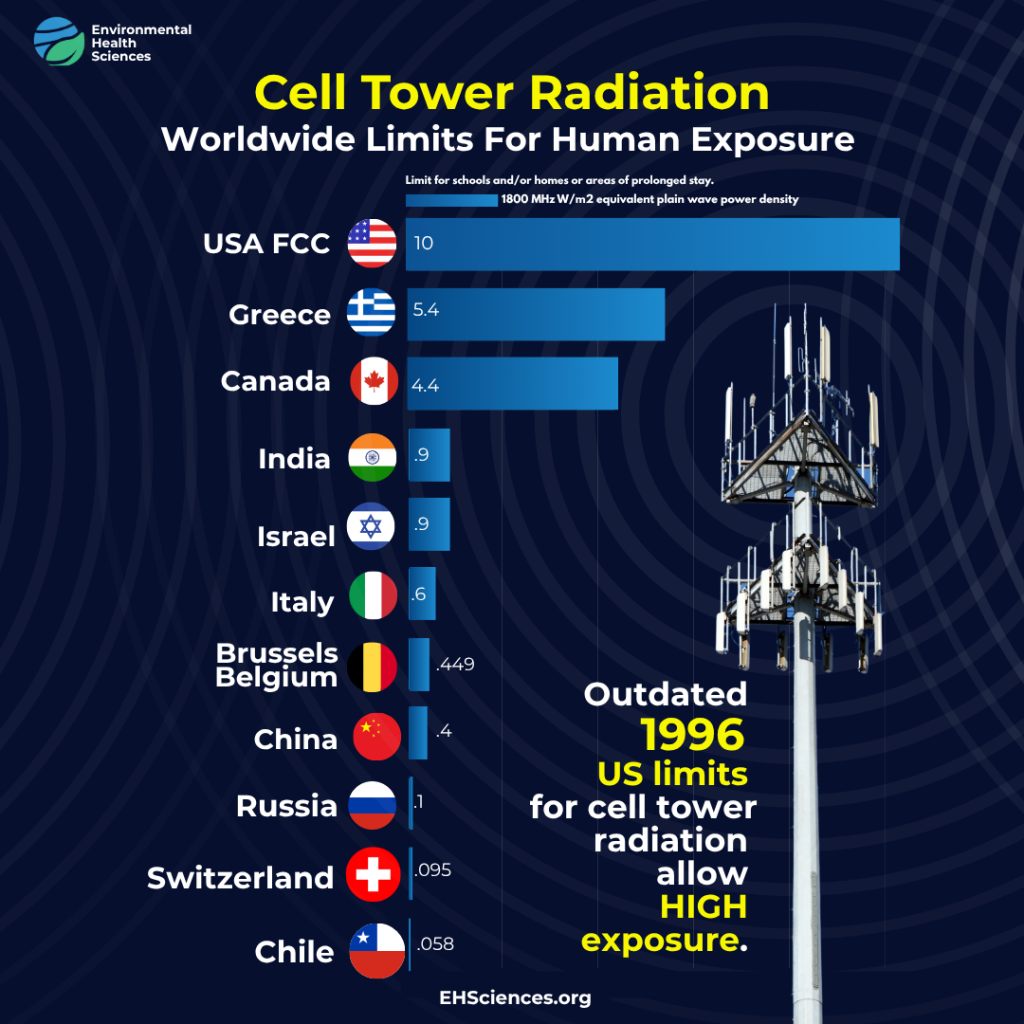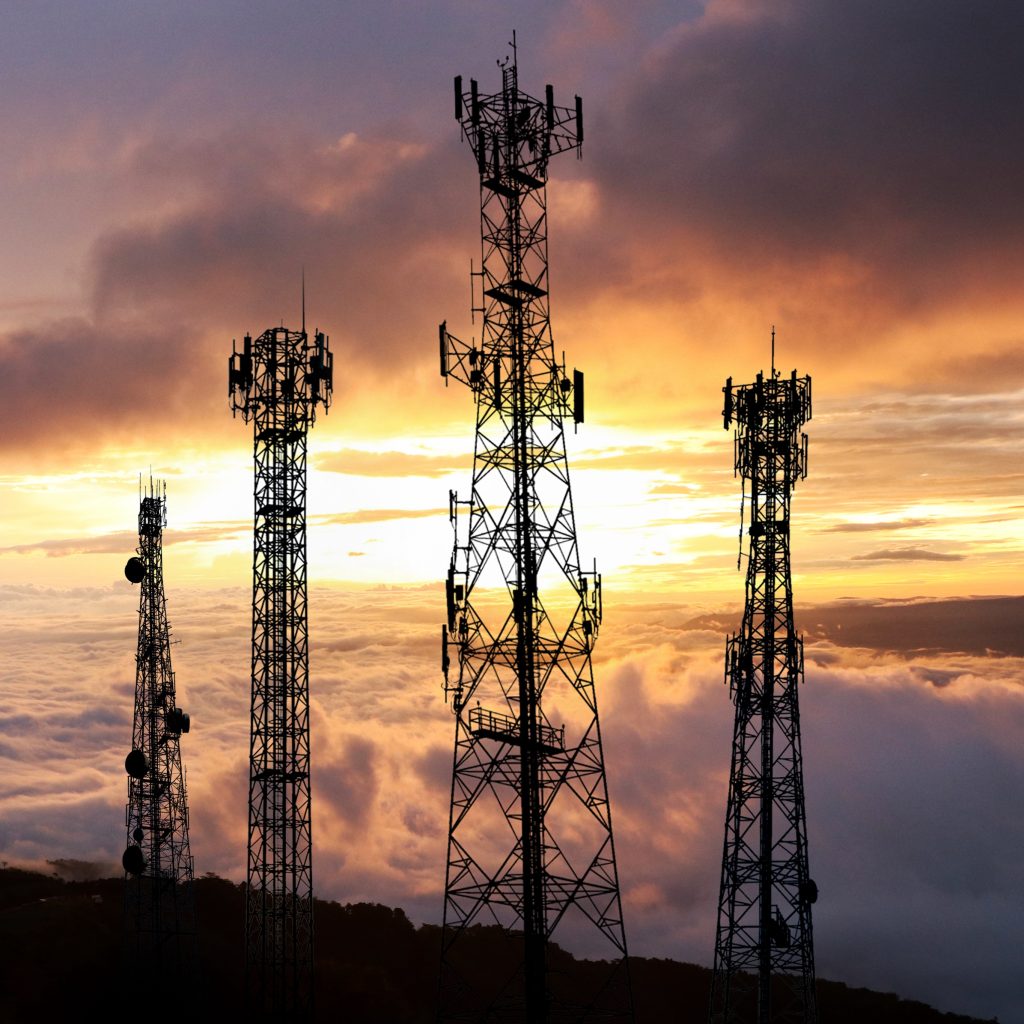Wireless radiation and electromagnetic fields (EMF) are a rapidly increasing environmental exposure.
Cell phones, cell towers, and wireless devices emit radiofrequency radiation, a type of EMF. Government limits are decades old. Scientists are calling for safeguards to protect human health and wildlife.
Our Work
The Wireless and EMF Program at Environmental Health Sciences aims to:
- Advance scientific understanding of health
and environmental risks. - Support science-based, protective regulations
and transparent oversight. - Promote innovative solutions towards a safe
technology future.
Watch Now
Linda Birnbaum PhD, former director of the National Institutes of Environmental Health and the National Toxicology Program, dives into the science behind EMF’s health impacts, the “clear evidence” of cancer findings in the NIH animal study, the increased vulnerability of children and pregnant women, and the actions needed to reduce cell phone exposure.
FAQ
- What is EMF?
Electromagnetic fields (EMFs) are ubiquitous in the modern world. They are invisible energized waves composed of electric and magnetic fields. Growing research suggests artificially generated non-ionizing EMFs can have harmful effects on human health and the environment.
- How are we exposed to EMFs?
Scientists have focused on the health effects of two types of non-ionizing EMF:
- Wireless radiofrequency radiation, which is emitted by all wireless devices such as cell phones, tablets, laptops, smart devices, Bluetooth, cell towers and 5G.
- Magnetic field extremely low frequency EMF (often referred to as just “EMF”), which is emitted by electronics, charging cords and power lines.
- What are the health effects of exposure to EMF?
Studies have reported associations between exposure to EMF and cancer, genetic effects, decreased testosterone, sperm damage, memory problems, altered thyroid hormone levels, and altered neurotransmitters in the brain. Studies have also found impacts to wildlife, plants and trees.
Non-ionizing EMFs have been found to increase oxidative stress in the body. This can lead to inflammation, disrupting healthy functions and increasing the risk of chronic disease.
- How is EMF exposure regulated?
In the U.S., the Federal Communications Commission’s regulatory limits for wireless radiation exposure were set in 1996. Since that time, there has been no review of these limits to ensure they are based on up-to-date science. FCC limits only prevent short-term tissue overheating, ignoring biological effects and long-term exposure risks.
The U.S. does not have any limits for magnetic field EMF exposure.
- What do experts say?
Numerous scientific and medical organizations, including the American Academy of Pediatrics and California Department of Health, are calling for a scientific review of current regulations as well as public health advice to reduce exposure.
The New Hampshire State Commission issued a Report on 5G and wireless technology recommending cell towers be distanced from homes and schools. Click here to learn more about experts’ safety recommendations.
- What are some ways to reduce exposure?There are many simple ways to protect yourself.
-
Distance phones and wireless devices away from your head and body.
-
Do not carry cell phones in your pocket or bra.
-
Use speakerphone or wired airtube headphones for calls, and corded and ethernet tech rather than wireless or Bluetooth.
-
Turn your Wi-Fi off when it’s not in use.
The Santa Clara Medical Association issued Best Practices for Safe Technology in Schools and the Maryland State Environmental Health And Protection Advisory Council provides Guidelines to Reduce Wireless and EMF.
-
Latest on EHN.org
EHN All about wireless radiation on EHN: Latest news and updates
- Webinar: FCC and Congressional Proposals To Strip Local Control Over Cell Towers
FCC and Congressional Proposals To Strip Local Control Over Cell Towers Webinar
- Yale Study: Wireless radiation increased the expression of autism-related genes in laboratory models
A recent study by Yale researchers published in Cell Reports found that exposure to wireless radiofrequency (RF) radiation — emitted by cell phones, cell towers, and Wi-Fi — interfered with neurodevelopment and increased the expression of autism-related genes in laboratory models of the fetal brain.
- WHO-backed reviews on wireless health effects fail to assure safety, scientists warn
A new paper published in Environmental Health identifies serious flaws in a series of reviews on the health effects of wireless radiation commissioned by the World Health Organization (WHO). Scientists from the International Commission on the Biological Effects of Electromagnetic Fields (ICBE-EMF), a multidisciplinary group of experts, concluded that the safety of cell phones and wireless technologies cannot be assured.
- Is Wi-Fi linked to Alzheimer’s? Study urges further research
A recent review published in Frontiers in Neurology examined the research about the influence of wireless radiation on oxidative stress and its possible relationship with Alzheimer’s disease. It found that exposure to wireless radiation at 2.4 gigahertz (GHz) — the frequency commonly used for Wi-Fi technology — could alter the expression of genes responsible for key cellular functions such as DNA repair and metabolism.
- Laptops and cell phones may amplify genetic risks to male infertility, study finds
A recent study published in Molecular Biology Reports found men with specific genetic variations may face greater fertility challenges when exposed to the electromagnetic field (EMF) radiation, including wireless radiation, emitted by laptops on their laps or cell phones in their pants pockets.
- Cell phone radiation altered brain development in rodents, study finds
A recent study funded by the French Ministry of Ecology published in Neurotoxicology found that exposure to cell phone radiation before and after birth impacted brain development in rodents at levels considered safe for humans by the U.S. Federal Communications Commission (FCC) and International Commission on Non-Ionizing Radiation Protection (ICNIRP).






